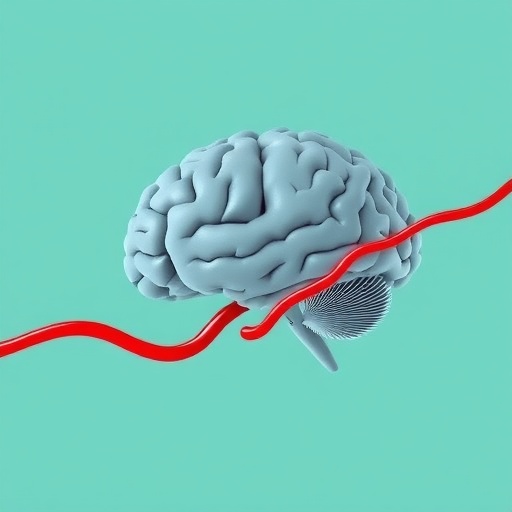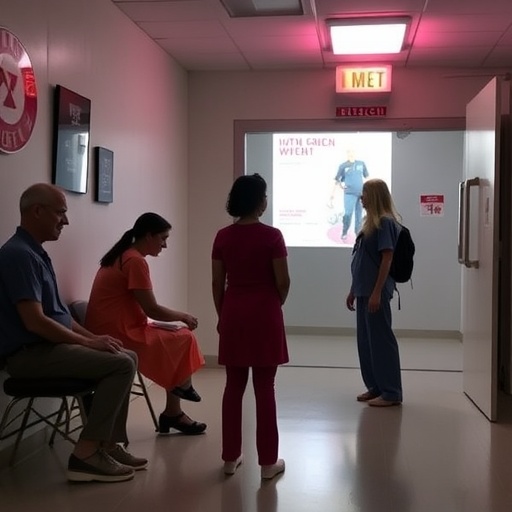Carotid Endarterectomy and the Blood-Brain Barrier: A New Frontier in Treating Bilateral Carotid Artery Stenosis
The human brain’s relentless demand for oxygen and nutrients is met through a complex and highly specialized vascular system. Central to this network are the carotid arteries, paired blood vessels responsible for delivering the oxygen-rich blood essential for brain function. However, when these arteries become narrowed or stenotic—a condition known as carotid artery stenosis—the brain’s delicate supply line is compromised, significantly increasing the risk of ischemic stroke. While carotid endarterectomy (CEA), a surgical technique designed to remove arterial blockages, has long been established as an effective intervention to restore blood flow, emerging research is now shedding light on its potential to repair disruptions in the blood-brain barrier (BBB), a crucial gatekeeper of the brain’s microenvironment.
The blood-brain barrier is an intricate, selectively permeable interface formed by endothelial cells lining cerebral vessels, astrocytic endfeet, and pericytes. Its primary role is to isolate the neural tissue from systemic circulation, controlling the passage of ions, nutrients, and neuroactive substances, and shielding the brain from pathogens and toxins. Damage or increased permeability of the BBB has been implicated in a host of neurological conditions, including cognitive decline, neuroinflammation, and neurodegenerative diseases. Until recently, the extent to which carotid artery stenosis impairs BBB integrity remained largely unexplored, raising questions about whether surgical revascularization could reverse such effects.
A recent pioneering study conducted by Dr. Yan Zhang and colleagues at the China National Clinical Research Center for Neurological Diseases has rigorously investigated the influence of CEA on BBB permeability in patients afflicted with bilateral carotid artery stenosis. Recognizing the critical implications for both stroke prevention and cognitive prognosis, this research employed sophisticated imaging algorithms to analyze cerebral hemodynamics and BBB function before and after surgical intervention. The study cohort included 17 patients presenting severe stenosis—defined as at least 70% luminal narrowing—in both carotid arteries, providing a unique opportunity to evaluate bilateral vascular pathology and its treatment outcomes.
Utilizing computed tomography perfusion imaging (CTP), a modality that integrates non-invasive measurement of cerebral blood flow dynamics with contrast agent tracking, the researchers quantified vital parameters such as cerebral blood flow (CBF), cerebral blood volume (CBV), mean transit time (MTT), and time to peak (TTP). Moreover, they assessed the permeability surface area-product (PS), an advanced marker signifying the degree to which the BBB permits extravasation of the contrast medium, thereby serving as a surrogate for barrier integrity. Data were acquired one week prior to CEA and several months postoperatively, ensuring adequate temporal resolution to capture both immediate and sustained vascular and barrier changes.
Before surgical intervention, distinctive cerebral perfusion deficits were identified predominantly on the operative side, exhibiting reduced CBF alongside prolonged MTT and delayed TTP. These findings reflect significant hemodynamic impairment due to stenosis, where slowed blood velocity and altered microvascular transit compromise oxygen delivery. Interestingly, CBV and PS parameters did not differ significantly between the operative and non-operative hemispheres at baseline, suggesting that while blood volume remained relatively preserved, the subtle yet critical endpoint of BBB permeability was already implicated across both sides.
Post-CEA analysis revealed a remarkable reversal of the aberrant parameters on the operative side. Measures of CBV, MTT, TTP, and PS displayed significant improvement, indicating not only restoration of more efficient blood flow but also a normalization of BBB permeability. This finding is particularly groundbreaking, as it offers the first clinical evidence that surgical removal of carotid artery obstructions can stabilize and partially restore the protective barrier function of the cerebral vasculature. In contrast, the non-operative side, which also harbored severe disease but was not surgically addressed, showed no notable improvement in these metrics, underscoring the localized impact of surgical reperfusion.
Dr. Zhang emphasizes the clinical significance of these findings, noting that “given the critical role of the BBB in maintaining cerebral homeostasis and cognitive function, our demonstration that carotid endarterectomy can reverse barrier permeability abnormalities opens new avenues for therapeutic strategies aimed at neuroprotection and cognitive recovery in patients with carotid artery stenosis.” Indeed, cognitive decline is a recognized but often underappreciated consequence of chronic cerebrovascular insufficiency, and these data suggest that timely surgical intervention may offer dual benefits of stroke prevention and cognitive preservation.
Moreover, expert commentary from Dr. Changyu Lu of Peking University International Hospital highlights the complexity of treating bilateral carotid stenosis. The lack of BBB and hemodynamic recovery on the non-operative side may reflect the severity and chronicity of stenosis in these patients, raising questions about the potential merits of bilateral surgical approaches or adjunctive therapies to optimize cerebral vascular health comprehensively.
The study also raises intriguing possibilities about postoperative monitoring and personalized medicine. Advanced imaging biomarkers such as PS could be integrated into routine clinical protocols to evaluate BBB function and cerebral perfusion dynamics, guiding surgical decision-making and assessing treatment efficacy beyond traditional anatomical criteria. This could ultimately lead to tailored interventions aimed at preserving neural integrity alongside vascular patency.
In addition to expanding our understanding of cerebrovascular pathophysiology, this research contributes to the evolving concept of neurovascular coupling, where vascular health directly influences neural outcomes. It challenges clinicians and researchers to consider the cerebrovascular system not merely as a conduit for blood flow but as an active participant in brain function, immune defense, and metabolic regulation.
In summary, carotid endarterectomy emerges not only as a mechanical solution to arterial obstruction but also as a means to restore the integrity of the blood-brain barrier, potentially counteracting the neurovascular dysfunctions that underlie stroke and cognitive impairment. This study marks a significant advance in cerebrovascular medicine, underscoring the importance of interdisciplinary approaches combining vascular surgery, neuroimaging, and neurobiology to enhance patient outcomes in complex vascular disorders.
Future research is warranted to explore the long-term cognitive benefits associated with BBB stabilization post-CEA and to investigate the molecular underpinnings of barrier repair. Randomized controlled trials incorporating larger cohorts and multimodal neuroimaging could elucidate the broader impact of reperfusion on neurological health and inform guidelines for the management of bilateral carotid artery stenosis.
As our population ages and the burden of cerebrovascular disease escalates worldwide, innovations that harmonize vascular revascularization with neuroprotection could redefine standards of care. The insights gleaned from Dr. Zhang’s study illuminate a promising path forward, wherein the restoration of blood flow transcends mechanical relief, fostering a resilient and guarded brain environment poised to resist the ravages of ischemia and inflammation.
Subject of Research: People
Article Title: Carotid endarterectomy and blood-brain barrier permeability in subjects with bilateral carotid artery stenosis
News Publication Date: 17 June 2025
Web References: https://cnjournal.biomedcentral.com/articles/10.1186/s41016-025-00398-3
References: DOI: 10.1186/s41016-025-00398-3
Image Credits: BruceBlaus
Keywords: Neuroscience, Life sciences, Health and medicine, Neurological disorders, Clinical research
Tags: bilateral carotid artery stenosis treatmentblood-brain barrier integrityblood-brain barrier permeabilitycarotid artery stenosis complicationsCarotid endarterectomy benefitsendothelial cells and brain healthischemic stroke risk reductionneurodegenerative disease treatment strategiesneuroinflammation and carotid surgeryneurological conditions and BBBsurgical interventions for brain protectionvascular system and brain function





